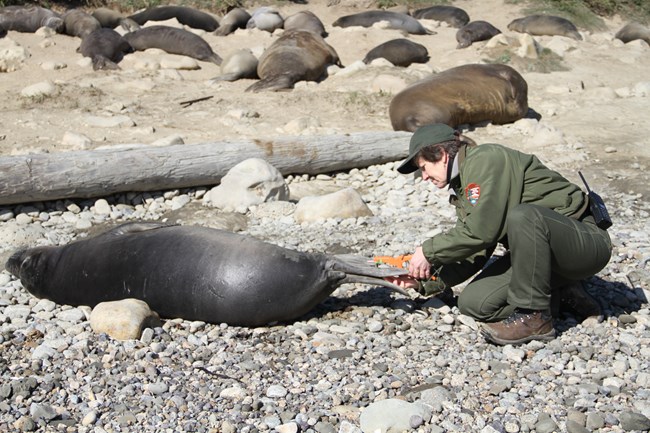
NPS Photo / Joseph Schramm As wildland habitat is lost elsewhere in California, the relevance of the Point Reyes Peninsula increases as a protected area with a notable rich biological diversity. Over 45% of North American avian species and nearly 18% of California's plant species are found in the park due to the variety of habitat and uniqueness of the geology. Thirty federally-listed threatened and endangered species of animals and six federally-listed threatened or endangered species of plants exist within the Seashore. Even if you can only visit here for a day, you will begin to see what we have at Point Reyes National Seashore and how it works. As you drive through windswept Bishop pines, hike up Mt. Wittenberg under towering Douglas firs, or walk along Bear Valley Trail through mixed woodlands to the exposed coastal scrub near the ocean, you will begin to see patterns. You might ask yourself why certain plant communities grow in certain places. Their placement began with ancient geologic forces that created the bedrock and soils. Particular characteristics in these soils determine which types of plants can survive in different locations. Hills, valleys, and exposure provide further discrimination for plants, depending on their sunlight needs and tolerance to winds. Nothing is random in what you are observing—plants grow where they can survive forming the foundations of all other life including our own. During your exploration you may also catch a glimpse of some of the animals that make their home here. Wildlife abounds throughout the Seashore. Along the coast you may find marine mammals such as whales, harbor or elephant seals, and sea lions. A closer look reveals an abundance of bird life feeding near the tideline. Back in the forest, you may glimpse a bobcat, coyote, raccoon, or skunk scurrying off. We also have plenty of deer and elk to be seen. Discover more about the diverse habitats at Point Reyes by reading Defining Habitats (449 KB PDF - Adobe® Acrobat Reader® may be needed to view PDF documents). To learn more about some of the research being conducted at Point Reyes, visit the Pacific Coast Science and Learning Center and the San Francisco Bay Area Inventory & Monitoring Program websites. Learn more about:
|
Last updated: February 5, 2024
